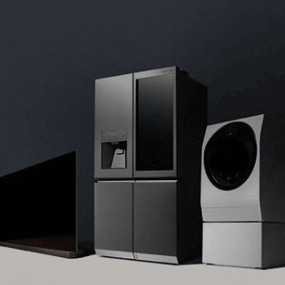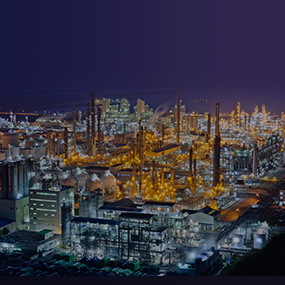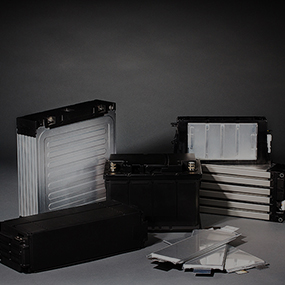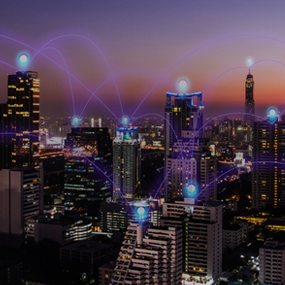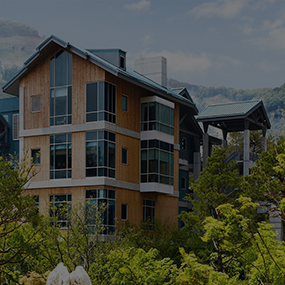LG Innotek
LG Innotek unveils full lineup of ‘Horticulture LEDs’ to the market
2018.07.05LG Innotek today announced that it set up a full lineup of “horticulture LEDs,” which are the light sources that can make plants grow faster than under the sunlight, and will venture into the global market.
LG Innotek secured 30 types of horticulture LED packages optimized according to light wavelength and power consumption. In addition to visible light LEDs, the company also launched horticulture UV (ultraviolet) LEDs.
Horticulture LED is a state-of-the-art semiconductor light source that can control plant growth rate and increase the nutrient content of the crop by using the light of a specific wavelength. This product was developed considering the characteristics that the physiological responses such as photosynthesis and flowering vary depending on the wavelength of light.
In addition, LG Innotek’s horticulture LEDs can raise the marketability of the crops. LG Innotek’s 380nm wavelength UV-A LED can be used to enhance the phytochemical content of antioxidants such as anthocyanin and lutein. 405nm wavelength LEDs that emit purple light can thicken the leaves of the plant and make the color sharper.
The company’s horticulture LEDs can be applied to smart greenhouses and plant factories to boost productivity. 450nm wavelength LEDs that emit blue light and 660nm wavelength LEDs that emit dark red light can shorten the growth period of plants by promoting photosynthesis regardless of environmental changes such as the weather.
LG Innotek’s horticulture LED is good for eco-friendly organic farming. The 530nm LED light has the function of suppressing mold development. Also, pests do not like 615nm light wavelength. So, a 615nm wavelength LED can drive away nasty pests.
LG Innotek plans to speed up its market penetration based on its broad product lineup and unique technology.
In particular, the company plans to provide horticulture LEDs that are optimized according to crop type, lighting location, and required functions. This is possible because the company has more than 30 products with different wavelength, light quantity and irradiation angle. The company is expanding its promotions for lighting and module companies in Europe, North America and Asia.
LG Innotek plans to launch an additional 730nm near infrared LED this year. This product can increase the content of specific ingredients, such as sugar in crops and saponin in ginseng, and can be utilized for cultivation of functional crops.
According to the market researcher Yole development, the horticulture LED market is expected to grow 4 times to USD 400 million in 2022 from USD 100 million last year. The market is expected to reach USD 700 million in 2027 with the expansion of the smart farm and horticulture factory market.
June O Song, the vice president of LG Innotek’s LED business unit, said, “LEDs are attracting attention as the most effective light source for cultivating crops with uniform quality.” He also said, “With various product line-ups, we will provide the best horticulture LEDs that can satisfy the customers.”
LG Innotek secured 30 types of horticulture LED packages optimized according to light wavelength and power consumption. In addition to visible light LEDs, the company also launched horticulture UV (ultraviolet) LEDs.
Horticulture LED is a state-of-the-art semiconductor light source that can control plant growth rate and increase the nutrient content of the crop by using the light of a specific wavelength. This product was developed considering the characteristics that the physiological responses such as photosynthesis and flowering vary depending on the wavelength of light.
In addition, LG Innotek’s horticulture LEDs can raise the marketability of the crops. LG Innotek’s 380nm wavelength UV-A LED can be used to enhance the phytochemical content of antioxidants such as anthocyanin and lutein. 405nm wavelength LEDs that emit purple light can thicken the leaves of the plant and make the color sharper.
The company’s horticulture LEDs can be applied to smart greenhouses and plant factories to boost productivity. 450nm wavelength LEDs that emit blue light and 660nm wavelength LEDs that emit dark red light can shorten the growth period of plants by promoting photosynthesis regardless of environmental changes such as the weather.
LG Innotek’s horticulture LED is good for eco-friendly organic farming. The 530nm LED light has the function of suppressing mold development. Also, pests do not like 615nm light wavelength. So, a 615nm wavelength LED can drive away nasty pests.
LG Innotek plans to speed up its market penetration based on its broad product lineup and unique technology.
In particular, the company plans to provide horticulture LEDs that are optimized according to crop type, lighting location, and required functions. This is possible because the company has more than 30 products with different wavelength, light quantity and irradiation angle. The company is expanding its promotions for lighting and module companies in Europe, North America and Asia.
LG Innotek plans to launch an additional 730nm near infrared LED this year. This product can increase the content of specific ingredients, such as sugar in crops and saponin in ginseng, and can be utilized for cultivation of functional crops.
According to the market researcher Yole development, the horticulture LED market is expected to grow 4 times to USD 400 million in 2022 from USD 100 million last year. The market is expected to reach USD 700 million in 2027 with the expansion of the smart farm and horticulture factory market.
June O Song, the vice president of LG Innotek’s LED business unit, said, “LEDs are attracting attention as the most effective light source for cultivating crops with uniform quality.” He also said, “With various product line-ups, we will provide the best horticulture LEDs that can satisfy the customers.”
